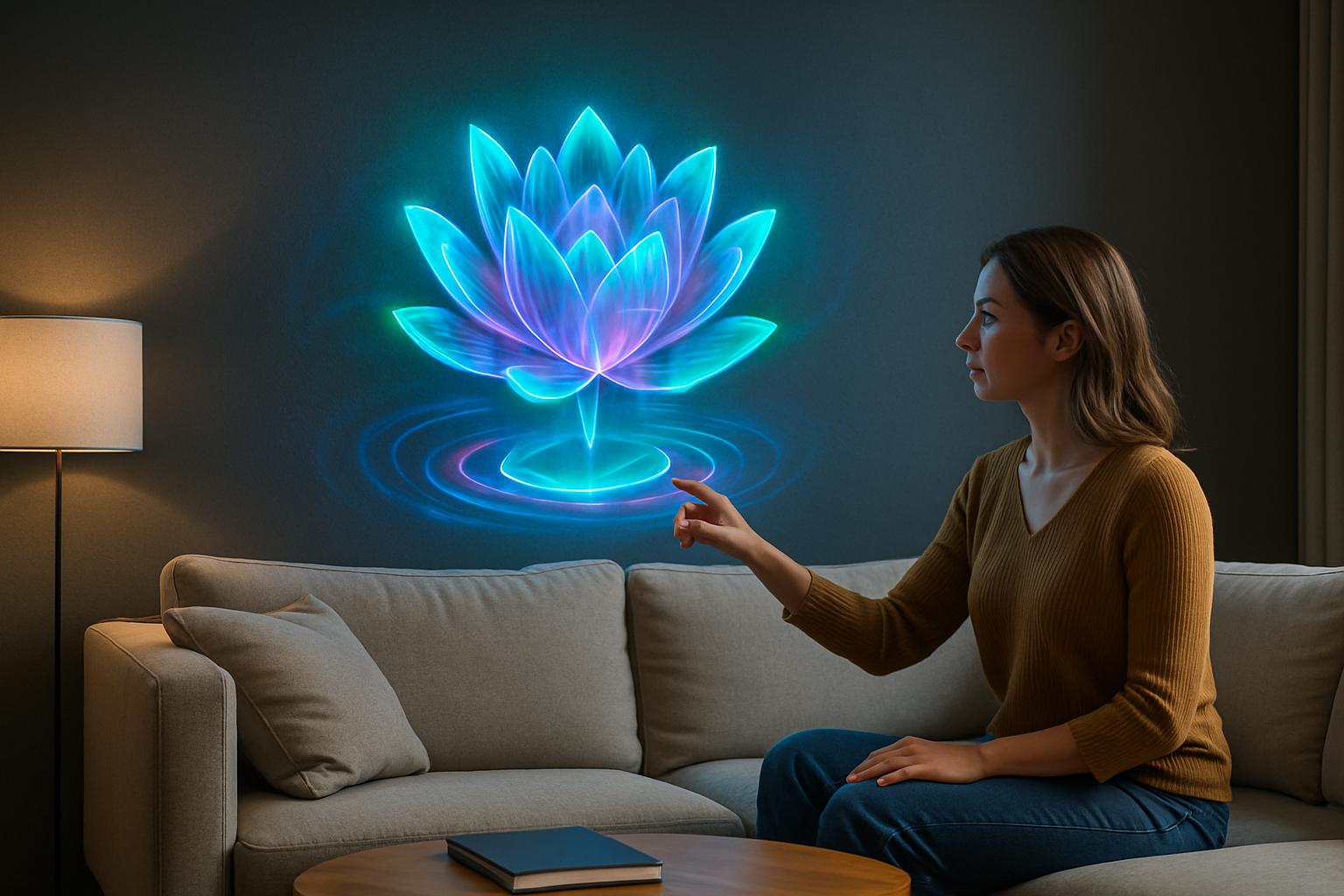Holographic Decor: Bringing Future Tech into Contemporary Homes
Imagine stepping into your living room, where a shimmering waterfall cascades down the wall, or a lush forest seems to grow right out of your coffee table. This isn't a scene from a sci-fi movie—it's the cutting-edge world of holographic decor. As technology continues to blur the lines between digital and physical spaces, innovative homeowners are embracing this futuristic trend to create truly captivating living environments.

Initially, holographic decor was limited to high-end installations in luxury homes and experimental art galleries. These early adopters showcased the potential of the technology, using specialized projectors and screens to create floating images and interactive displays. As the technology became more accessible and affordable, it started to find its way into mainstream home design.
The Allure of Digital Dimensionality
What makes holographic decor so appealing is its ability to transform static spaces into dynamic, ever-changing environments. Unlike traditional artwork or decor items, holographic installations can be customized and altered at will, allowing homeowners to refresh their living spaces without physical renovations.
The versatility of holographic decor is unparalleled. From subtle ambient lighting effects to full-scale digital murals, the possibilities are limited only by imagination. Some popular applications include:
-
Holographic fireplaces that provide the ambiance of a real fire without the need for ventilation or fuel
-
Virtual aquariums that bring the serenity of underwater scenes into any room
-
Interactive art installations that respond to movement or touch
-
Digital windows that can display any view, from cityscapes to tropical beaches
Merging Technology with Interior Design
Integrating holographic elements into home decor requires a delicate balance of technological prowess and design sensibility. Interior designers specializing in this niche must be well-versed in both traditional design principles and the latest advancements in projection and display technologies.
The key to successful holographic decor lies in seamless integration with the existing architecture and furnishings. High-quality projectors and screens are often concealed within custom-built fixtures or furniture, ensuring that the technology doesn’t detract from the overall aesthetic when not in use.
Lighting plays a crucial role in the effectiveness of holographic displays. Designers must carefully consider ambient light levels and create optimal viewing conditions while maintaining a comfortable living environment. This often involves the use of smart lighting systems that can automatically adjust based on the time of day or the specific holographic content being displayed.
The Psychological Impact of Living with Holograms
As holographic decor becomes more prevalent in homes, researchers are beginning to study its psychological effects on occupants. Early findings suggest that the ability to customize one’s environment on demand can have positive impacts on mood and well-being.
The immersive nature of holographic displays can create a sense of expanded space, potentially alleviating feelings of confinement in smaller living areas. Additionally, the ability to change scenery at will can provide mental stimulation and reduce monotony, particularly for individuals who spend significant time at home.
However, some experts caution that overreliance on digital environments could lead to a disconnection from the physical world. Striking a balance between holographic elements and traditional decor is crucial to creating a harmonious living space that doesn’t feel overly artificial.
Practical Considerations and Challenges
While the concept of holographic decor is undeniably exciting, there are several practical considerations that homeowners must address:
-
Cost: High-quality holographic systems can be expensive, both in terms of initial installation and ongoing maintenance.
-
Energy consumption: Continuous operation of projectors and displays can lead to increased electricity bills.
-
Technical expertise: Troubleshooting and updating holographic systems may require specialized knowledge.
-
Content creation: While some systems come with pre-loaded content, creating custom holographic displays often requires professional design services.
Despite these challenges, proponents of holographic decor argue that the benefits outweigh the drawbacks. As technology continues to advance and become more affordable, it’s likely that we’ll see an increase in homes incorporating these futuristic elements.
The Future of Holographic Home Design
As we look to the future, the potential applications of holographic decor are boundless. Emerging technologies like volumetric displays and light field projectors promise even more realistic and interactive holographic experiences.
Industry experts predict that holographic elements will become increasingly integrated with smart home systems, allowing for seamless control through voice commands or gestures. We may see the development of holographic assistants that can guide us through recipes in the kitchen or provide workout instructions in a home gym.
The line between physical and digital decor is likely to blur further, with augmented reality technologies allowing us to overlay holographic elements onto real-world objects. Imagine changing the color of your sofa or the pattern on your wallpaper with a simple swipe on your smartphone.
Embracing the Holographic Home
As with any emerging trend, the adoption of holographic decor will likely be gradual. Early adopters and tech enthusiasts are paving the way, showcasing the potential of this futuristic design element in their homes.
For those intrigued by the concept but hesitant to fully commit, there are entry-level options available. Portable holographic displays and small-scale projection systems allow homeowners to experiment with digital decor without a significant investment.
Ultimately, holographic decor represents a exciting convergence of technology and interior design. It offers a glimpse into a future where our living spaces are as dynamic and adaptable as the digital world we inhabit online. As the technology continues to evolve and become more accessible, we may find ourselves living in homes that are limited only by our imagination, where the boundaries between reality and digital artistry are beautifully blurred.





